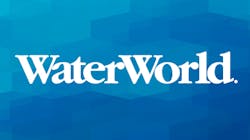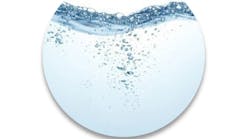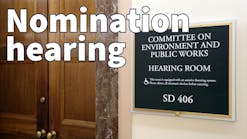On the heels of a tumultuous 2020, a new presidential administration and Democrat-controlled Senate hold much promise for the water industry at the start of 2021. For this month’s cover feature, I spoke with several industry organizations about what they anticipate from Washington in the new year.
“We are cautiously optimistic that in efforts to get the country back on its feet economically there will be a focus on infrastructure investment,” Tommy Holmes, AWWA legislative director, said. “There’s no better way to invest infrastructure dollars than in the water sector because it creates a lot of jobs. You’re investing in public health and investing in environmental health, so we’re hopeful we’ll see a new emphasis on water infrastructure investment [for 2021].”
The article recaps the major issues for AWWA, WEF and NACWA, with PFAS, infrastructure funding, lead and copper, and coronavirus relief topping the list of items the industry is keeping an eye on. Read more on page 10.
Our special section on water utility management features two stories about forward-thinking utilities saving energy and dollars with innovative approaches. From small changes to large facility upgrades, developing a sustainable wastewater solution often requires a unique fit dependent on the challenges and budgetary constraints a utility faces. On Page 14, read about how various energy-efficient solutions can be used as a way for these utilities to not only realize economic savings but also promote environmental benefits.
When looking to upgrade its sewer system, the city of Buffalo, N.Y., began designing and implementing a real-time decision support system (RT-DSS) across the city to identify areas with the greatest need. On page 16, learn how this technology allowed the city to reduce CSO events, saving the Buffalo Sewer Authority $145 million.
On page 20, read about the City of Lakeland, Fla.’s AMI journey, which began in 2011. Next, on page 24, authors Gilberto Pintonello, Daniela Cavagnino, and Adam Ladak discuss practices and technology that can improve operational efficiency at water testing laboratories. As the authors write, “To safeguard the public from negative effects, water testing laboratories need to ensure accurate detection and quantitation of these contaminants under strict regulatory guidelines.” Using modern gas chromatography–mass spectrometry (GC-MS)-based methods and a few workflow enhancements, they argue, will enable these facilities to more quickly analyze water samples, generating the quality results necessary to protect public health.
As we move toward a circular water economy, a number of water companies are unlocking new areas of business through innovation. On page 26, KWR’s Jos Frijns outlines his work with NextGen, a part of the European Union’s Water in the Context of the Circular Economy program. The work will “define the next generation of water systems and solutions across the sectors for water, energy, and materials.”
Finally, on page 38, read about how the city of Woodville, Ohio, was able to turn its lime storage needs into an operational advantage, improving water treatment efficiency with an integrated silo, feeder and dust collection system when its previous storage solution began to fail.
In our first issue of the new year, we have gathered a wide variety of stories about water and wastewater utilities thinking outside the box for creative solutions to their needs. I have enjoyed putting this issue together, and hope you enjoy reading it. I wish you all a happy, healthy 2021, wherever you are. WW




